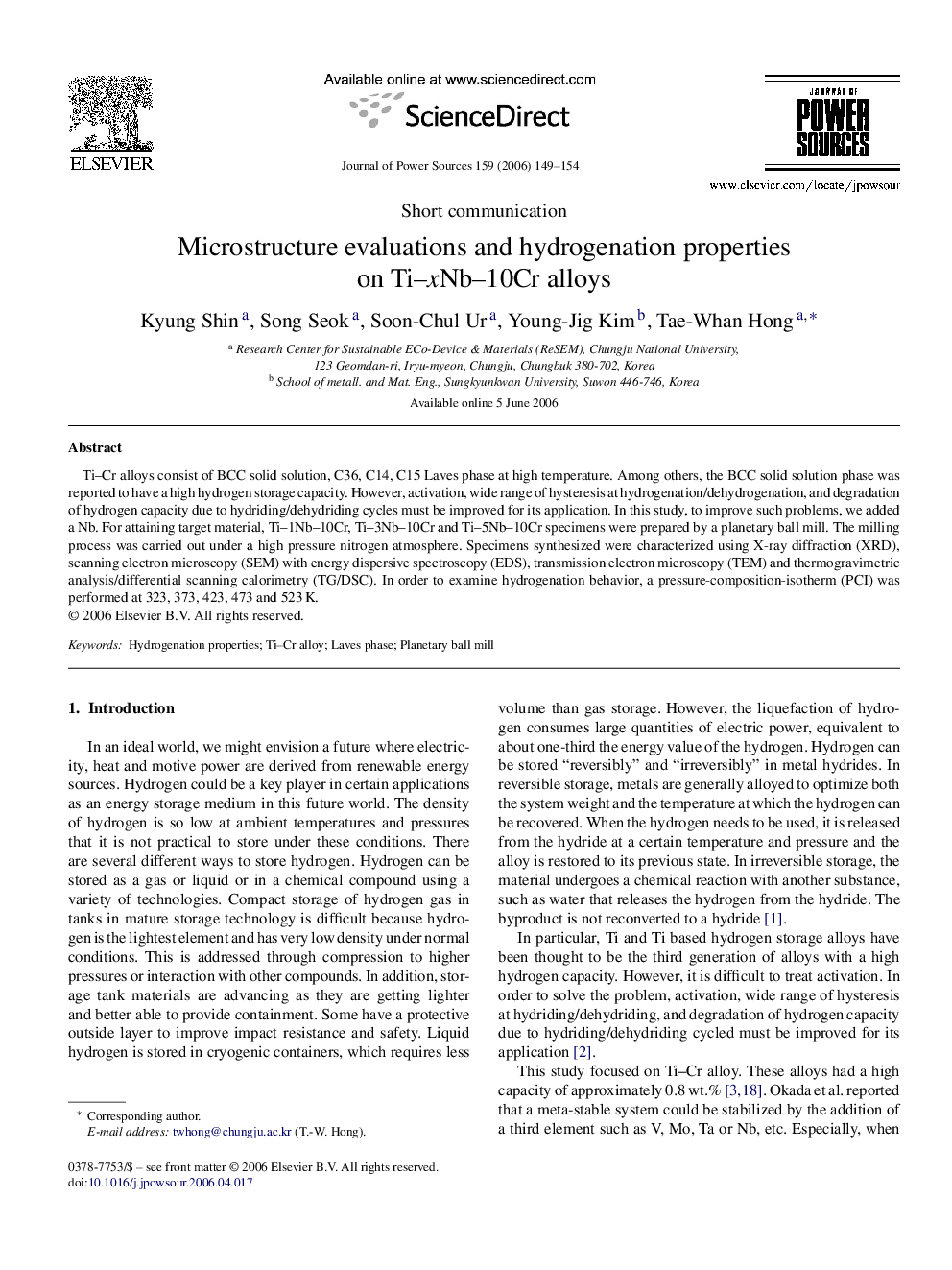| Article ID | Journal | Published Year | Pages | File Type |
|---|---|---|---|---|
| 1292558 | Journal of Power Sources | 2006 | 6 Pages |
Abstract
Ti-Cr alloys consist of BCC solid solution, C36, C14, C15 Laves phase at high temperature. Among others, the BCC solid solution phase was reported to have a high hydrogen storage capacity. However, activation, wide range of hysteresis at hydrogenation/dehydrogenation, and degradation of hydrogen capacity due to hydriding/dehydriding cycles must be improved for its application. In this study, to improve such problems, we added a Nb. For attaining target material, Ti-1Nb-10Cr, Ti-3Nb-10Cr and Ti-5Nb-10Cr specimens were prepared by a planetary ball mill. The milling process was carried out under a high pressure nitrogen atmosphere. Specimens synthesized were characterized using X-ray diffraction (XRD), scanning electron microscopy (SEM) with energy dispersive spectroscopy (EDS), transmission electron microscopy (TEM) and thermogravimetric analysis/differential scanning calorimetry (TG/DSC). In order to examine hydrogenation behavior, a pressure-composition-isotherm (PCI) was performed at 323, 373, 423, 473 and 523Â K.
Related Topics
Physical Sciences and Engineering
Chemistry
Electrochemistry
Authors
Kyung Shin, Song Seok, Soon-Chul Ur, Young-Jig Kim, Tae-Whan Hong,
